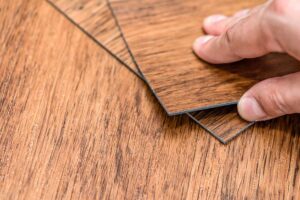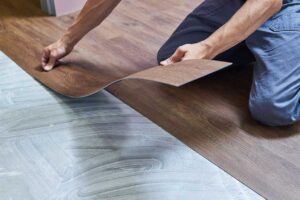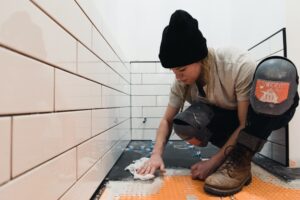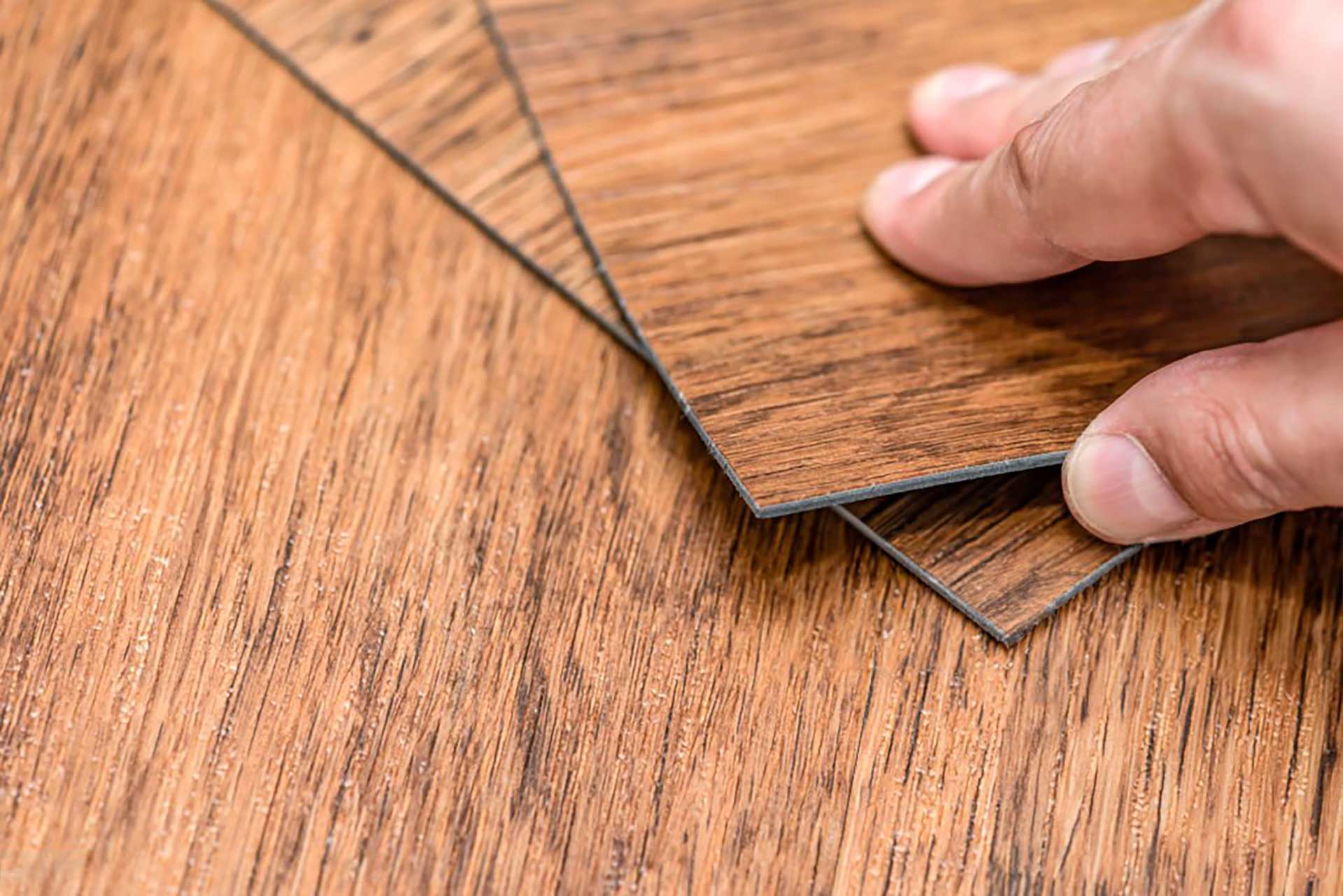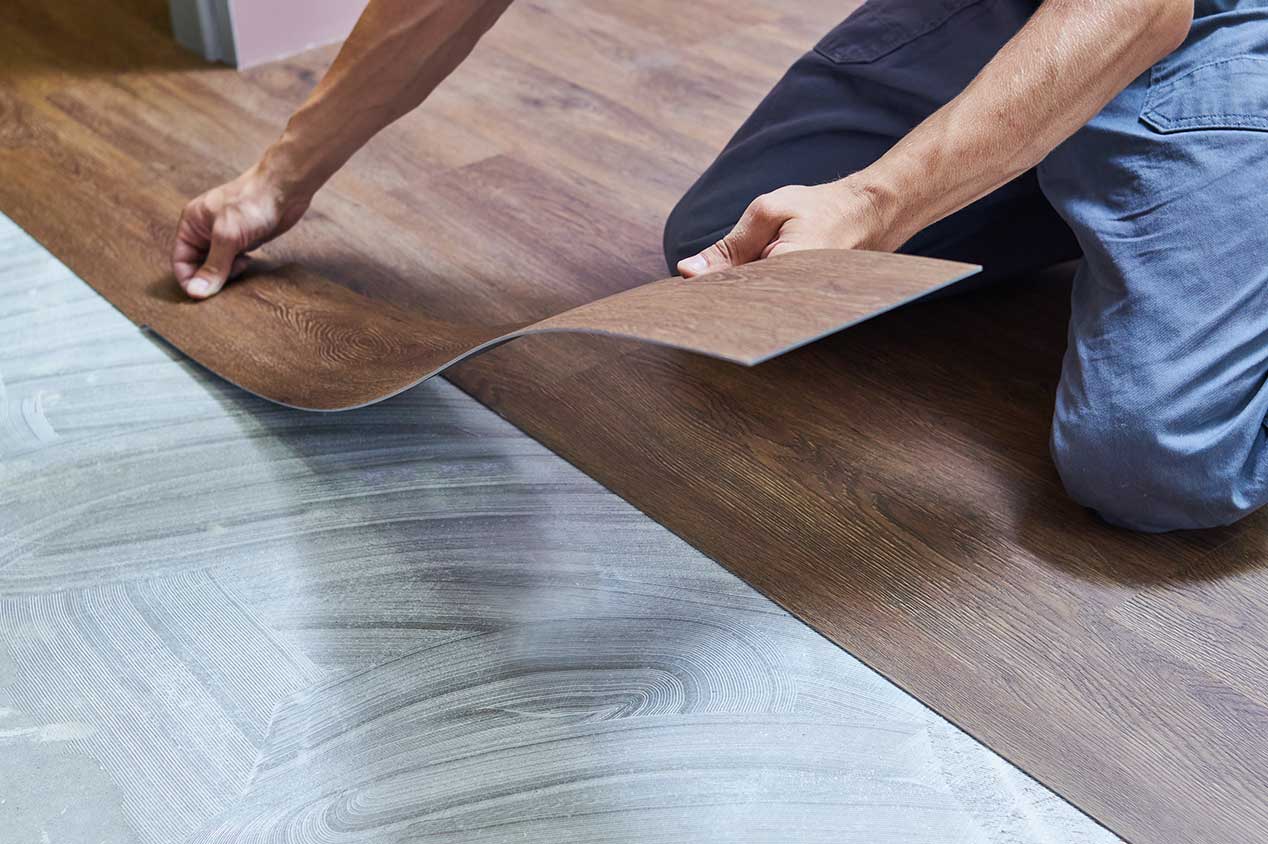Tiling can be a great way to spruce up any room in your home. Whether you’re replacing worn-out carpeting or just looking for a modern upgrade, tile flooring can provide the perfect finishing touch. But tiling isn’t always as easy as it looks. Get the look you want with these expert tips and tricks from the professionals. From choosing the right type of tile, to preparing the room, to installing and caring for the tiles, we’ll show you how to achieve the perfect look with tile flooring.
Types of Tile Flooring
When it comes to tile flooring, there are a variety of materials and textures to choose from, different installation methods to consider, and maintenance tips to keep in mind. From ceramic to porcelain, wood-look to stone-look, you’ll find a great option to suit your needs.
Materials & Textures
When it comes to tile flooring, one of the most important factors to consider is the type of material and texture. Choosing the right material for your tile flooring is essential for achieving your desired look and will also affect the upkeep and maintenance of your flooring. From ceramic to porcelain to natural stone, there are many options when it comes to material selection. Additionally, the tile colors, adhesive selection, grout types, and sealing techniques all contribute to the overall look of your tile flooring.
It’s important to take into account the environment in which the tile will be placed as some materials are better suited for certain areas. For example, ceramic is great for low-traffic areas as it is not as durable as porcelain or stone. Natural stone, on the other hand, requires more maintenance and is better suited for more durable areas.
To ensure your tile flooring looks its best, consider the following: the material selection, tile colors, adhesive selection, grout types, and sealing techniques. With the right materials and textures, you can create a beautiful, durable, and stylish tile flooring that will last for years to come.
Installation Methods
Building on the materials and textures discussed previously, the type of tile flooring you choose will largely depend on the installation method you use. This includes tile selection, adhesives choice, grout selection, subfloor preparation and tile spacing. To ensure a successful installation, it’s important to choose the right materials and adhere to the manufacturer’s instructions. Select tile that’s suitable for the area you’re installing in, as well as the right adhesive, grout and subflooring. When it comes to tile spacing, make sure your tiles are evenly spaced and that the grout lines are consistent. If you’re not sure, it’s best to consult a professional, as an expert can help you achieve the perfect look.
Maintenance Tips
For the best results, select the right type of tile flooring for your space. To maintain it, use the proper mopping techniques, deep cleaning, dirt prevention, and stain removal. Grout repairs may also be necessary, depending on the use of the area.
- Mop regularly with heated water and a mild detergent to remove surface dirt and dust.
- Deep clean tile and grout with a solution of vinegar and water.
- Prevent dirt and dust buildup by using mats and rugs in high traffic areas.
- Remove spills quickly and blot stains with a damp cloth, followed by a specialized cleaner.
Proper maintenance will help keep tile flooring looking like new. With the right techniques and supplies, you can protect your investment and enjoy your tile floor for many years.
Preparing the Room
Accurately measuring and planning the floor you want to tile is essential for achieving the perfect look. The first step is to take careful measurements of the room and create a floor plan. With the right preparation, you can make sure your tile flooring is installed correctly and looks beautiful.
Room Measurement
Measuring your room correctly is key to achieving the perfect look with tile flooring. Before starting, it’s important to arrange your furniture and measure the room so that you know how much tile to buy and how to lay it out. Below are four tips to help you get started:
- Floor leveling: Make sure the floor is level so that your tiles lay flat and won’t have any lumps or bumps.
- Tile cutting: Cut tiles to fit around obstacles like pipes, cabinets, and walls.
- Tile spacing: Leave enough room between tiles for expansion and contraction.
- Floor edging: Finish off the edges with trim for a polished, professional look. Following these tips will help you create your perfect tile flooring look.
Floor Planning
Once you’ve finished measuring the room, it’s time to plan out how you’ll lay the tiles for a perfect look. Start by researching the latest flooring trends to get an idea of the design choices available to you. Consider your tiling methods, cost considerations, and surface preparation. Once you have a plan, be sure to measure and cut the tiles precisely, taking special care to make sure each tile is perfectly aligned. When laying the tiles, use a notched trowel to ensure the adhesive adheres evenly and that the tiles are secure. To complete the perfect look, finish the edges with grout of the same color as the tiles. With careful planning and attention to detail, you’ll achieve a perfect tiled floor.
Installing the Tile
Now that the room is prepped and ready for installation, it’s time to measure the space and select the tiles you’ll be using. First, measure the length and width of the room, and calculate the total square footage of the floor. Once you know the size of the space, you can start picking out tiles that will fit the look and style you’re going for.
Measure Space
Your room’s dimensions are key to measuring for the correct amount of tiles you’ll need for your floor. Measurement is a critical step in the tile installation process. To properly measure your space, you’ll need to consider your room’s layout, grout selection, tile layout, adhesive selection, and tile sealant.
First, create a rough sketch of your room. Measure the length of each wall, and the distance between the walls. Make sure to include the distance between the walls and any other obstructions. Next, use a grout calculator to determine how much grout you’ll need. Once you’ve determined the correct amount of grout, figure out the layout of your tiles. Consider the size and shape of the tiles you’re using when you plan your layout.
After you’ve established the tile layout, select the adhesive and sealant that’s right for the job. Make sure to choose an adhesive that’s suitable for your tile type, and a sealant that’s designed to protect your tiles. Finally, double-check your measurements and calculations before you purchase the tiles. This will ensure that you have the right amount of tiles, grout, adhesive, and sealant for your project.
Select Tiles
Choose the tiles that best suit your room’s design and reflect your style. With so many types of tile available, it’s important to compare them in terms of quality, budget, and color coordination. Mosaic designs are a great way to add detail, but it’s important to consider how they effect your budget and overall look. When selecting tiles, make sure to opt for ones that are made with good quality and won’t suffer from wear and tear too quickly. Consider your budget and how much you can afford to spend, as well as how much tile is needed for your project. Finally, be sure to coordinate the colors of the tile with the other elements in the room, such as furniture and paint, to create a unified look.
Finishing Touches
Once the tile is installed, the finishing touches are the key to bringing your vision together. To complete the look, you’ll need to choose the right grout color, create attractive patterns, and seal the tile to ensure a long-lasting finish.
Choosing Grout Color
When it comes to the finishing touches of your tile floor, picking the right grout color is key to achieving perfection. Consider grout coverage, sealing techniques, visual appeal, and color combinations to ensure the best texture contrasts. Opt for a lighter color grout with darker tiles for a subtle, elegant look. Darker grout pairs well with lighter colored tiles for a more dramatic effect. Go with a grout color that complements the main tiles for a cohesive design. If it’s for a high traffic area, use a darker grout to hide dirt and dirt buildup. Be sure to seal your grout properly for a longer lasting finish. With these tips, you can achieve the perfect look with your tile flooring.
Creating Patterns
Make the most of your tile flooring by creating a custom pattern for a truly unique look. Color coordination, choosing shapes, mixing textures, and laying planks are all important components of this process. You can also create intricate mosaics to add a touch of class. Start by picking colors that will work together, and select shapes that fit the size of your space. If you’re feeling adventurous, mix different textures and lay planks in interesting patterns. Once you have your design, you can use grout to bring it all together. With a bit of creativity, you’ll be able to achieve a stunning design.
Sealing Tile
Once you have your tile flooring design complete, it’s time to seal the tile for a lasting finish. To ensure the protection of your tile flooring, applying a sealant and floor sealer is key. Here are some tips to consider when sealing tile:
- Apply a stain protection sealant on the tile surface.
- Seal the grout lines for extra protection.
- Choose a floor sealer that is suitable for your tile material.
- Consider other surface treatments such as waxes or polishes.
Caring for Tile
Caring for tile flooring requires more than just sweeping and mopping; you should also consider sealing, grout care, and even removal options for times when the tile needs to be replaced. Knowing the basics of tile cleaning and care can help keep your tiles looking beautiful and lasting for years to come.
Cleaning Basics
It’s easy to maintain your tile flooring with a few simple cleaning tips. Start by investing in the right cleaning products. Choose ones that are designed for tile flooring and that are safe to use on the surface. When mopping, use a damp mop and avoid soaking the floor. To protect the tile’s surface, use a sealant once a year. For stain removal, use a mild cleaner such as baking soda and water. Finally, to control odors, use a natural cleaner like vinegar and water. With these tips, your tile flooring will look great for years to come.
Sealant Necessity
Using a sealant once a year is an important part of caring for your tile flooring. Sealing the tile and grout will protect it from water damage and create a beautiful finish. The process is relatively simple and can be done as a DIY installation. For best results, thorough surface preparation is key. This includes cleaning the surface, applying a grout sealer, and then a tile sealant. With the right maintenance, your tile floor will look beautiful for years.
Grout Care
For optimal tile flooring results, caring for the grout is just as important as sealing it. Choosing the right grout color to coordinate with the tile is key, as is applying a sealant for protection against dirt and moisture. Regular cleaning with mild solutions helps keep grout looking great and prevent staining. Lastly, it’s important to stay on top of any sealant applications as needed.
- Grout selection
- Sealant application
- Cleaning solutions
- Stain prevention and color coordination
Removal Options
When caring for your tile flooring, removal options are important to consider. Cutting tiles can be done with a variety of tools, including a tile saw, manual tile cutter, or even a wet saw. When it comes to removing adhesive, using a razor blade is the most efficient way to scrape away any residue. Power washing is an effective way to remove any dirt or debris from the tile surface. Removing stains is an important part of caring for tile and can be done with a combination of warm water and mild detergent or baking soda. Replacing tiles is another option if the damage is too extensive. No matter what you choose, taking the proper steps to care for your tile flooring will ensure it looks pristine for years to come.
Frequently Asked Questions
What Is the Best Type of Tile Flooring for High-Traffic Areas?
For high-traffic areas, durability factors should be a priority when selecting tile flooring. Consider sealing techniques, maintaining grout, cost comparison, and material selection. All of these elements are key to ensuring the tile flooring lasts for a long time.
How Do I Select the Best Grout for My Tile Flooring?
You’re on the hunt for the perfect grout to complete your tile flooring. Consider grout color, sealing techniques, waterproofing options, tile designs, and ceramic tiles to make your decision. With the right knowledge and approach, you can select the perfect grout to achieve your desired look.
Is It Possible to Lay Tile Over Existing Flooring?
Yes, it is possible to lay tile over existing flooring. However, you will need to prepare the floor by sanding and cleaning it. Laminate should not be laid over tile. Grout selection and sealant application are also important to ensure a perfect look. Deep cleaning is also essential for your tile flooring to remain durable.
What Is the Best Way to Clean Tile Flooring?
To keep your tile flooring looking its best, seal it with a product designed for tile, and regularly sweep away dirt and debris. Pay attention to grout care, and consider DIY installation to save on cost. With these tips, you’ll be able to achieve the perfect look with tile flooring.
How Much Should I Expect to Pay for Professional Tile Flooring Installation?
The cost of professional tile flooring installation varies depending on waterproofing, tile patterns, sealing costs, grout removal, and adhesive types. Expect to pay for labor, materials, and extras like underlayment and sealant. Research costs to get the best deal.

